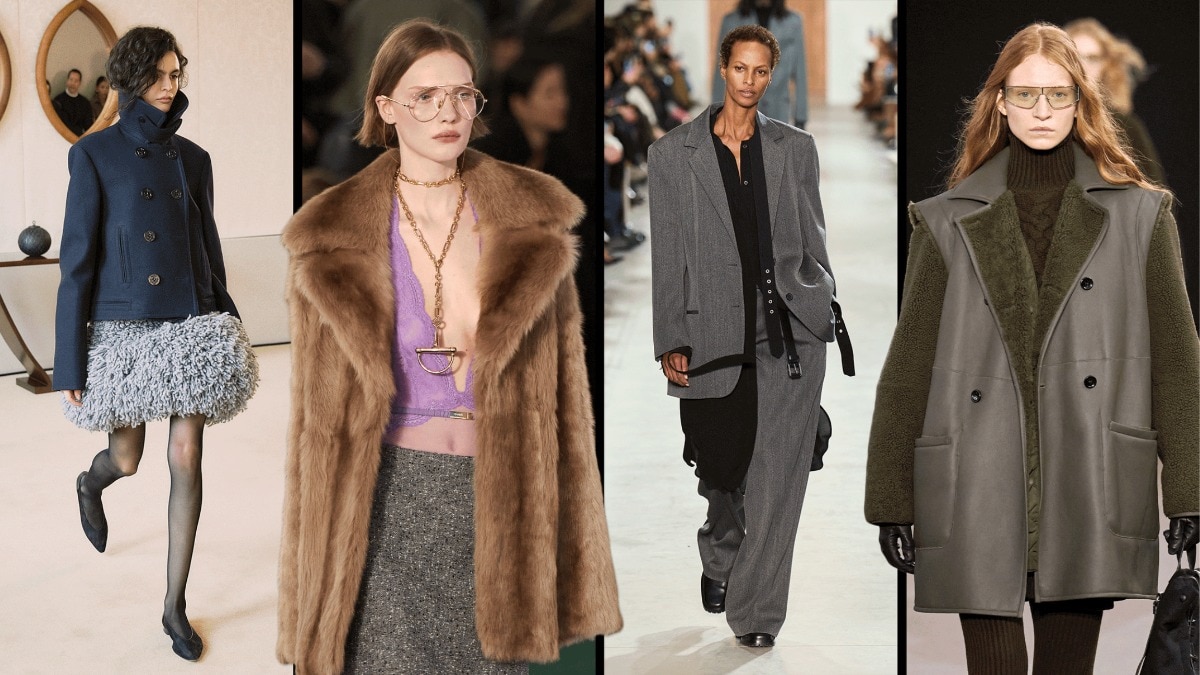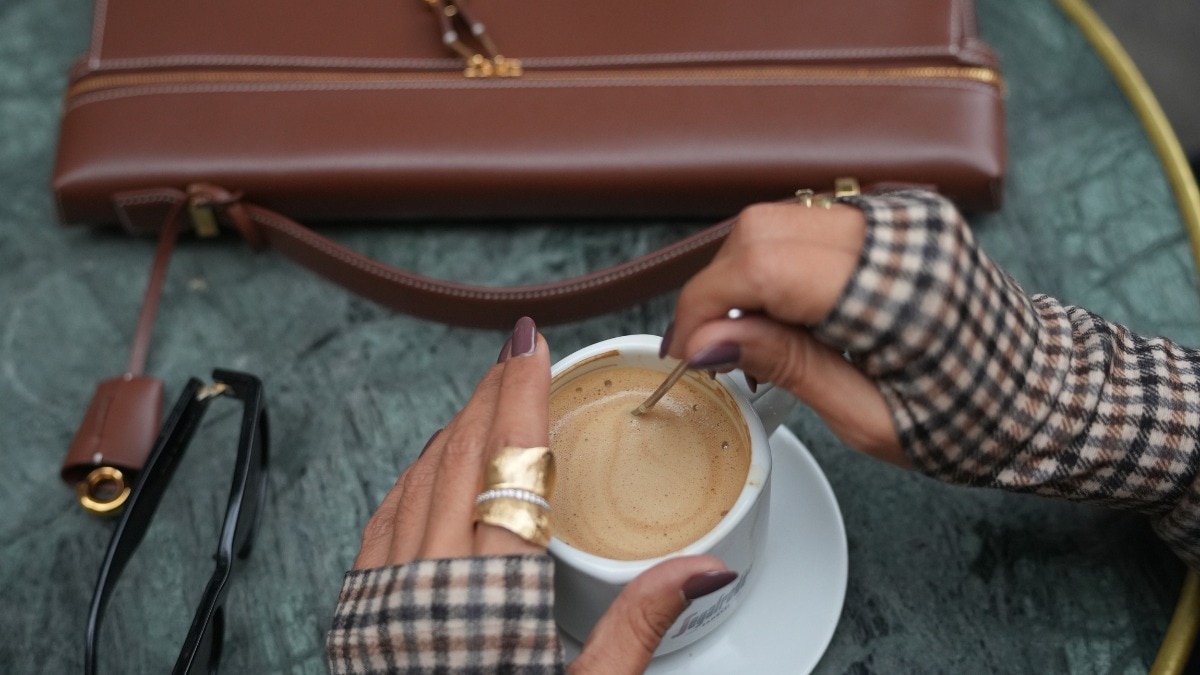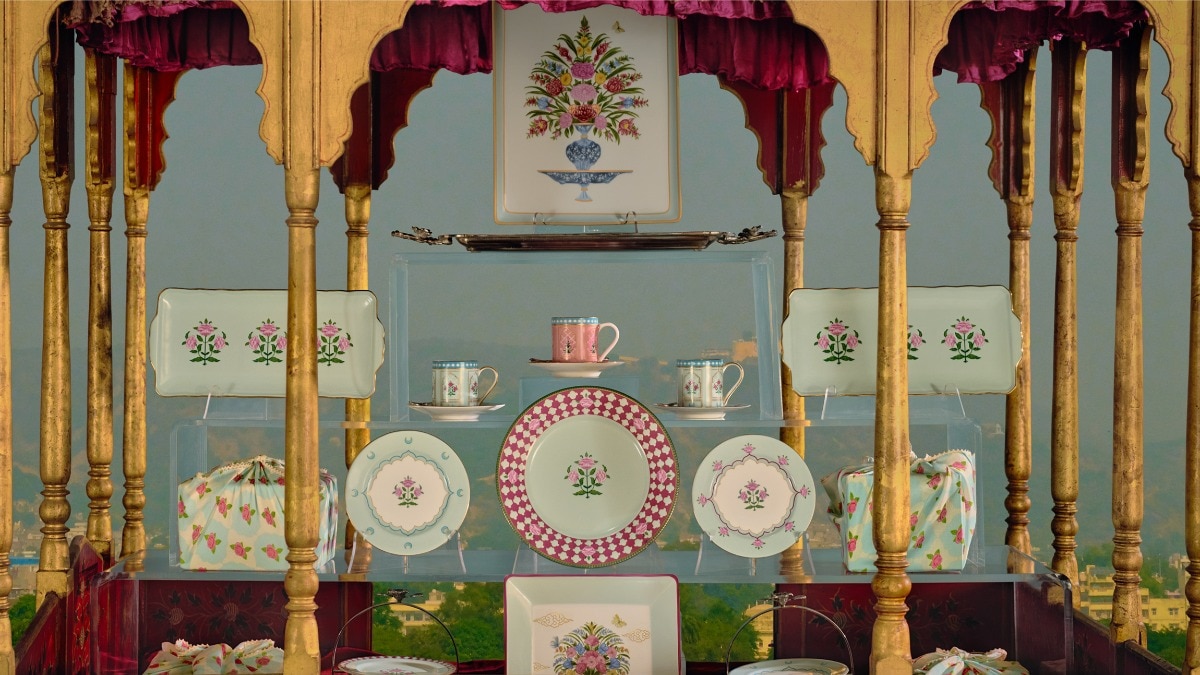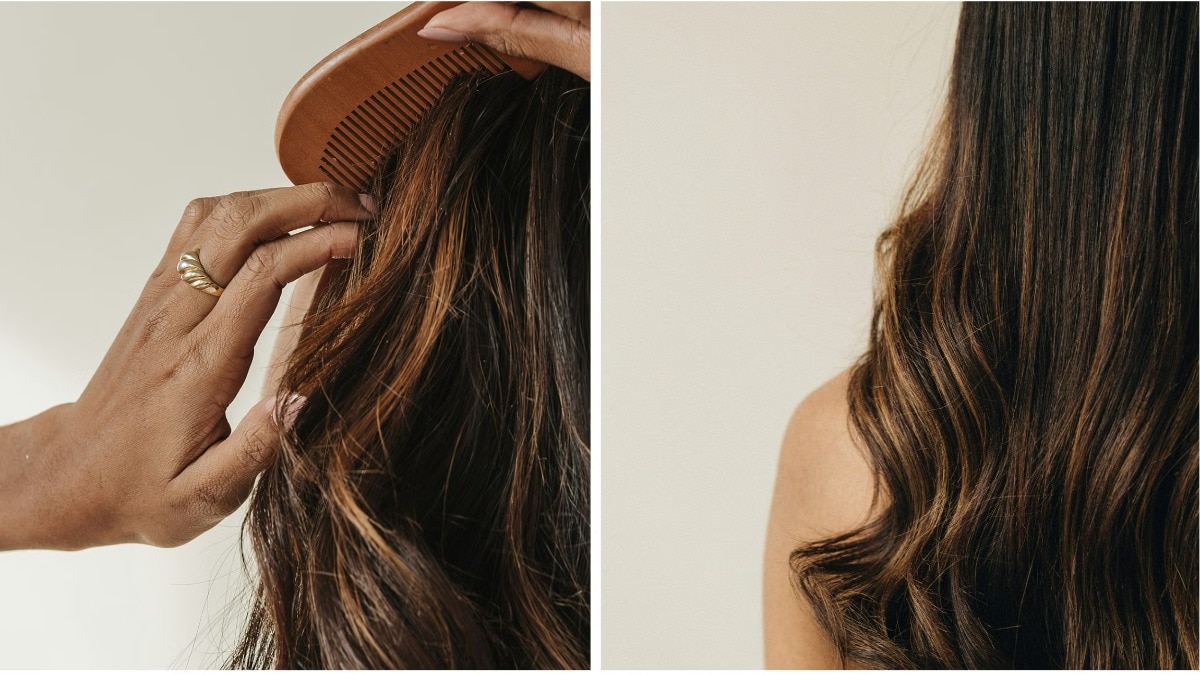
From walls to runways, how street art has redefined high fashion
Blurring the lines between art and couture, designers have created a vibrant mosaic of urban expression.

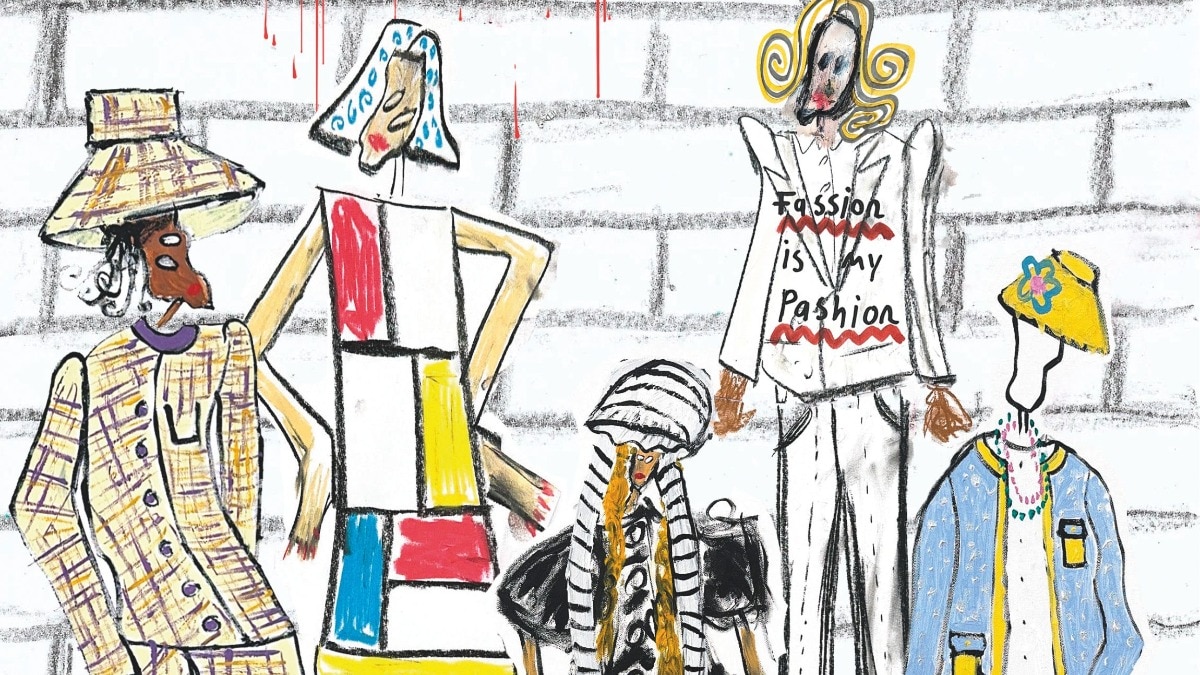
If you found yourself lost in a crowd during the Fashion Week in London, and stumbled upon graffiti that says “fassion is my pashion”, you’d have something in common with the person in Mumbai who might have come across a piece of street art in the same signature style, cleverly spelt “fassion weak.” The black letters, underlined with the recognisable red squiggly lines, are the work of Navinder Nangla, an Indian UK based artist and designer who’s making waves with his disruptive approach to fashion. Known for his tongue-in-cheek art that playfully mocks the industry’s self importance, Nangla’s work challenges the established aesthetics and norms. His iconic tags, sprayed across walls worldwide, capture the rebellious spirit of a generation seeking to forge their own identity through clothing. Nangla’s creations, including his “Praduh” t-shirt, a playful jab at Prada, embody this punk ethos, rejecting accepted norms and celebrating the chaotic inner experiences of the artist.

Over my conversations with Nangla, and especially when he created a magnificent piece for Bazaar India’s Fashion issue, I couldn’t help but wonder how his creative pursuit is only a celebration of an age-old collaboration. Street art and graffiti, born from the concrete jungle, have long been a voice for the voiceless, a canvas for rebellion, and an explosion of raw, unfiltered creativity. This vibrant energy has consistently infiltrated the halls of high fashion, transforming garments into wearable expressions of urban grit and artistic defiance.
One cannot discuss the intersection of street art and fashion without revisiting the seismic shock delivered by Alexander McQueen. His Spring/Summer ’99 show remains etched in fashion history, not just for its audacity but for its sheer brilliance. Shalom Harlow, a vision in a pristine white gown, stood on a rotating platform as two robotic arms, reminiscent of industrial machinery, came alive. With choreographed precision, they sprayed her dress with black and yellow paint, creating a mesmerising spectacle of art in motion. This wasn’t just a fashion show; it was a performance art piece that challenged the very definition of beauty and elevated graffiti to an art form worthy of high fashion. The dress itself, a symbol of delicate femininity, was violently transformed into a canvas for raw expression, mirroring the urban landscape where beauty and decay coexist.

Fast forward to 2022, and Coperni paid a homage of sorts to McQueen’s legacy with their spray-on dress. Bella Hadid, the epitome of modern-day glamour, bravely stood bare on the runway as a team of specialists meticulously sprayed her with a revolutionary liquid fabric. As if, by magic, the liquid solidified, forming a sleek, minimalist white dress that clung to her curves. This futuristic reimagining of the making of a garment showcased the boundless potential of technology while acknowledging the enduring influence of street art on the fashion landscape. Coperni’s performance, however, took a different approach. While McQueen’s displayed raw energy and deconstruction, Coperni’s emphasised innovation and the creation of something new, reflecting the evolving nature of street art and fashion.
Recently, Maria Grazia Chiuri, the visionary creative director of Dior, created the Miss Dior line. Featuring bold graphics, and explosive colours, the collection is a nod to Chiuri’s 1967 debut ready-to-wear collection and a manifesto of her hallmark celebration of feminism. Think vibrant prints mirroring the intricate murals of Lady Pink, a pioneer of feminist street art, or the rebellious spirit of Claire Fontaine’s text-based art woven into the fabric of haute couture. In one collection, Chiuri even collaborated with artist Judy Chicago to create a breathtaking set design featuring a giant inflatable sculpture that asked a pertinent question: “What if women ruled the world?” This powerful rhetorical question, combined with the collection’s street art-inspired garments, cemented Chiuri’s commitment to empowering women through fashion.

The influence of street art transcends the confines of high fashion, permeating the very fabric of streetwear. Iconic brands like Stüssy, born from the surf and skate culture of the 80s, have always incorporated graffiti inspired graphics and typography into their designs. From tees featuring bold tags and bubble letters to hoodies adorned with intricate murals, these garments capture the energy and spirit of street art, blurring the lines between high fashion and urban cool. Streetwear giants like Supreme have also collaborated with graffiti artists, releasing limited-edition pieces that become instant collector’s items.
Luxury fashion houses have embraced the allure of street art, recognising its power to connect with a younger, more rebellious audience. Marc Jacobs, during his tenure at Louis Vuitton, famously collaborated with Stephen Sprouse, incorporating his signature graffiti motifs into a collection of handbags and accessories that became instant cult classics. These coveted pieces were adorned with bold neon graffiti scrawls over the iconic monogram canvas. This was a glaring example of the power of street art to inject new life into established legacy brands. This collaboration was a game changer, proving that street art could not only coexist with luxury but also elevate it.
Moncler, renowned for their luxury outerwear, also ventured into the realm of street art through collaborations with artists like Kaws and Futura 2000. These limited-edition jackets, featuring iconic characters and vibrant spray-painted designs, transformed functional garments into wearable works of art, coveted by collectors and fashion enthusiasts alike. These collaborations have not only broadened Moncler’s appeal, but also provided a platform for street artists to showcase their work to a wider audience.

(From left to right) A bag and a pair of shoes from Gucci’s F/W 2016 collection, titled GucciGhost, by Alessandro Michele in col
And who could forget GucciGhost? Invited by former creative director Alessandro Michele to collaborate for the fall’s collection, Trouble Andrew adopted the house’s double G along with a set of eye-catching motifs, painting them graffiti-style over a line-up of accessories and ready-to-wear. The result unified Gucci’s two cultures, the past with the contemporary. This unexpected partnership challenged traditional notions of luxury and authenticity. Andrew’s playful and irreverent take on the iconic Gucci logo resonated with a new generation of luxury consumers, demonstrating the power of street art to disrupt and redefine.
Manish Arora, the Indian designer celebrated for his vibrant and eclectic aesthetic, was also captivated by the energy of street art. His creations were a riot of colour and texture, often featuring intricate graffiti patterns, bold graphics, and a playful disregard for convention. Inspired by the bustling streets of India, and the world, and the vibrant colours of traditional festivals, Arora’s designs were a fusion of cultural influences and urban aesthetics. His runway shows were legendary for their theatrical presentations, often featuring dancers and performers who brought his street art-inspired creations to life.


The truth is, that the intertwining of art and fashion is not a recent phenomenon. In fact, it’s a relationship that dates back centuries. During the Renaissance, master artists like Leonardo da Vinci and Michelangelo not only created timeless masterpieces of art, but also designed elaborate costumes and accessories for the elite. These artists understood that clothing was not merely a functional necessity but also a form of self-expression and a reflection of one’s status and taste. This historical connection underscores the enduring synergy between art and fashion—two creative forces that continue to inspire and influence each other. From the elaborate gowns of the yore to the street art-inspired bomber jackets of today, fashion has always been a canvas for artistic expression

As street art continues to evolve, pushing boundaries and challenging norms, its influence on fashion is bound to remain a powerful force. This dynamic art form has injected new life into the industry, inspiring designers to embrace bold expressions of creativity and challenge conventional aesthetics. The legacy of street art in fashion lives on, often standing witness to the power of art to transform not just garments but also the way we perceive the world around us. As new generations of artists and designers emerge, we can expect to see even more innovative and exciting collaborations that blur the lines between the “high’ and the “low”, creating a vibrant mosaic of urban expression.
Lead image credit: Illustration by Navinder Nangla
Body images: courtesy Wikimedia and Gettyimages.com
This article first appeared in Harper's Bazaar India October-November 2024, print edition.
Also read: Christian Louboutin's Diwali edit is a festive ode to India with its latest
Also read: How kinetic jewellery blends craftsmanship with timeless luxury

